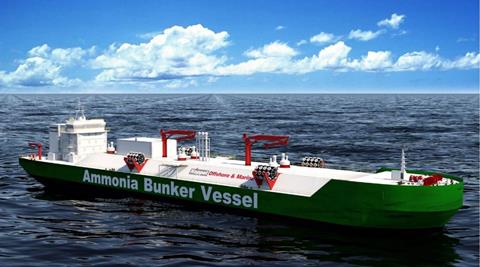A consortium, including A.P. Moller – Maersk A/S, has been granted Approval in Principle (AiP) from ABS for the design of an ammonia bunkering vessel.
The consortium includes Fleet Management Limited, Keppel Offshore & Marine, Maersk Mc-Kinney Moller Center for Zero Carbon Shipping, Sumitomo Corporation, ABS, K Line and the Maritime and Port Authority of Singapore (MPA).
The consortium aims to commence ammonia bunkering in the port of Singapore by 2030.
The Global Centre for Maritime Decarbonization has embarked on a study to address technical, procedural and regulatory guidelines for ammonia transfer and bunkering.
K Line and MPA plan to develop an ammonia bunkering ecosystem at the Port of Singapore. This follows a feasibility study last year that identified potential ammonia supply sources and indicative costs, and undertook the preliminary design and cost estimation for critical infrastructure, such as ammonia storage tanks and bunkering vessels.
While there are various global ammonia production projects under planning, none has yet achieved FID at the time of reporting. The largest capacities of green and blue ammonia production facilities under planning are reported to be up to 2GTPA in Australia and 5GTPA in Russia.
While cost of green ammonia is likely to be CAPEX driven, a significant part of blue ammonia cost is likely to be pegged to grey ammonia pricing. The well-to-wake GHG emissions of selected projects is expected to be about 1% of those of LNG and LSFO.
To date, there is only one existing ammonia storage tank in Singapore (Jurong Island) meant for specialty chemical and other specific downstream applications. Various storage terminal operators with operations in Jurong Island have been engaged, and undeveloped lands in Singapore may be potential sites for ammonia storage.






